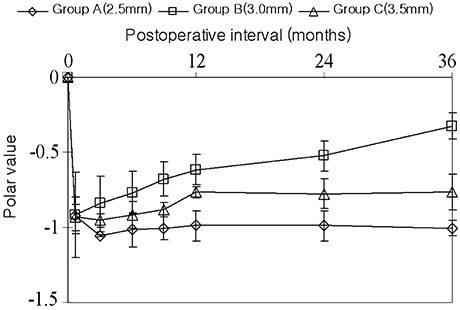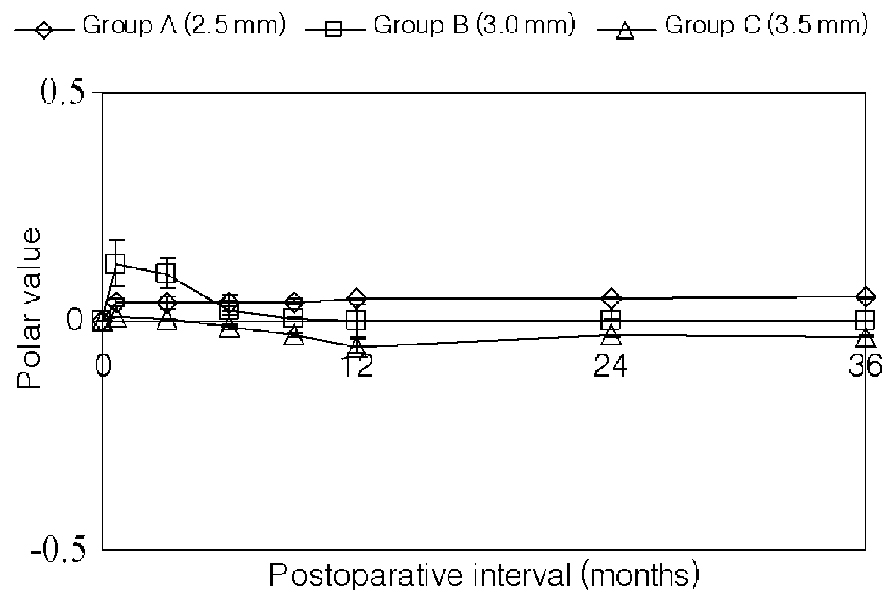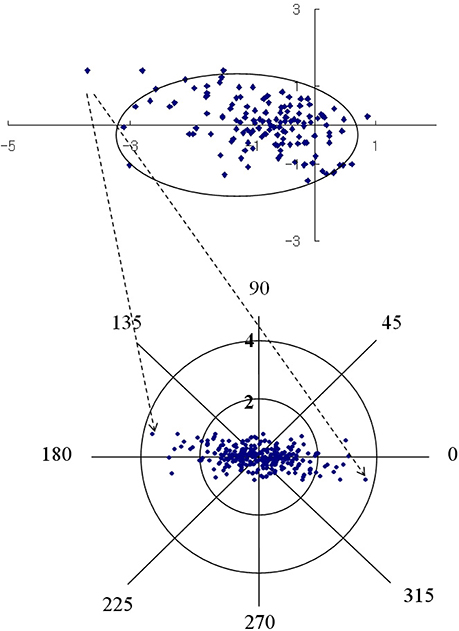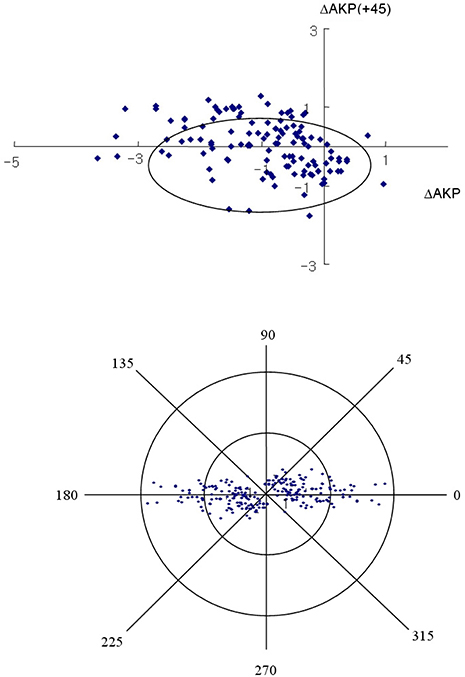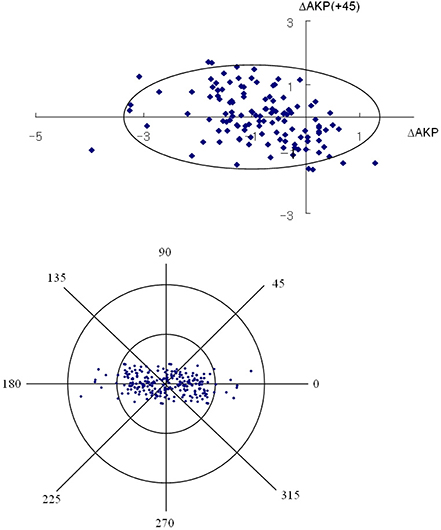Korean J Ophthalmol.
2007 Mar;21(1):1-5. 10.3341/kjo.2007.21.1.1.
Comparison of Surgically Induced Astigmatisms after Clear Corneal Incisions of Different Sizes
- Affiliations
-
- 1Oregon Eye Institute, Eugene, Oregon, USA. sungcmoon@hanmail.net
- KMID: 1105022
- DOI: http://doi.org/10.3341/kjo.2007.21.1.1
Abstract
- PURPOSE: This study was performed to assess efficiency and stability of astigmatic change by incision size after cataract surgery. METHODS: This work was designed as a retrospective, comparative, nonrandomized interventional study. A total of 121 cases of cataract surgery were reviewed in 98 patients performed by one surgeon at the Oregon Eye Institute in Eugene, OR, USA with 3-year follow-ups. All procedures were performed with the temporal approach of self-sealing incisions. The serial change in surgically induced astigmatisms were examined in all cases of three groups: Group A, cartridge injection of a foldable IOL through a 2.5 mm self-sealing incision; Group B, cartridge injection of a foldable IOL through a 3.0 mm self-sealing incision; Group C, cartridge injection of a foldable IOL through a 3.5 mm self-sealing incision. Keratometric data were obtained preoperatively, and 3 weeks, 3 months, 6 months, 9 months, 12 months, 24 months and 36 months postoperatively. Polar value analysis was performed to calculate the surgically induced astigmatism. RESULTS: The astigmatic change decreased over time in Group B (P<0.05). The other groups tended to remain in induced astigmatism. All groups showed anticlockwise torque at 3 weeks following surgery. Group B showed a decrease in deviation, but the other groups showed increases in their torque value at postoperative 12 months (P<0.05). CONCLUSIONS: The 3.0 mm incision size correlated with the least surgically induced astigmatism.
MeSH Terms
Figure
Cited by 3 articles
-
Comparison of Clinical Results between 2.2 mm MCCS and 2.8 mm SICS
Jung-Won Park, Jae-Kap Cho, Hyeon-Ju Nah, Yeoung-Geol Park, Kyung-Chul Yoon
Chonnam Med J. 2010;46(1):56-61. doi: 10.4068/cmj.2010.46.1.56.The Changes of With-the-rule Astigmatism After Clear Corneal Temporal Incision Cataract Surgery
Hae Young Park, Hyun Seung Kim
J Korean Ophthalmol Soc. 2008;49(3):433-441. doi: 10.3341/jkos.2008.49.3.433.Effects of Axial Length and Vitrectomy on Refractive Error after Cataract Surgery Using SRK/T Formula
Min Kyu Lee, Kyu Yeon Hwang, Man Soo Kim
J Korean Ophthalmol Soc. 2013;54(2):257-264. doi: 10.3341/jkos.2013.54.2.257.
Reference
-
1. Leaming DV. Practice styles and preferences of ASCRS members-1997 survey. J Cataract Refract Surg. 1998. 24:552–561.2. Drews RC. Five year study of astigmatic stability after cataract surgery with intraocular lens implantation: Comparison of wound sizes. J Cataract Refract Surg. 2000. 26:250–253.3. Mamalis N. Incision width after phacoemulsification with foldable intraocular lens implantation. J Cataract Refract Surg. 2000. 26:237–241.4. Phleger T, Scholz U, Skorpik C. Postoperative astigmatism after no-stitch, small incision cataract surgery with 3.5 mm and 4.5 mm incision. J Cataract Refract Surg. 1994. 20:400–405.5. Kohnen T, Lambert RJ, Koch DD. Incision sizes for foldable intraocular lenses. Ophthalmology. 1997. 104:1277–1286.6. Fine IH, Fichman RA, Grabow HB, editors. Clear Corneal Cataract Surgery and Topical Anesthesia. 1993. Thorofare, NJ: Slack.7. Muller-Jensen K, Barlinn B, Zimmerman H. Astigmatism reduction: no-stitch 4.0 mm versus sutured 12.0 mm clear corneal incisions. J Cataract Refract Surg. 1996. 22:1108–1112.8. Oshika T, Nagahara K, Yaguchi S, et al. Three year prospective, randomized evaluation of intraocular lens implantation through 3.2 and 5.5 mm incisions. J Cataract Refract Surg. 1998. 24:509–514.9. Masket S, Tennen DG. Astigmatic stabilization of 3.0 mm temporal clear corneal cataract incisions. J Cataract Refract Surg. 1996. 22:1451–1455.10. Kohnen T, Dick B, Jacobi KW. Comparison of the induced astigmatism after temporal clear corneal tunnel incisions of different sizes. J Cataract Refract Surg. 1995. 21:417–424.11. Rainer G, Menapace R, Vass C, et al. Surgically induced astigmatism following a 4.0 mm sclerocorneal valve incision. J Cataract Refract Surg. 1997. 23:358–364.12. Fine IH. Operative Technique in Cataract and Refractive Surgery. 1998. Vol. 1:61–65.13. Naeser K, Hjortdal J. Polar value analysis of refractive data. J Cataract Refract Surg. 2001. 27:86–94.14. Naeser K. Assessment of surgically induced astigmatism; call for an international standard [letter]. J Cataract Refract Surg. 1997. 23:1278–1280.15. Naeser K, Boberg-Ans J, Bargum R. Prediction of anterior corneal curvature following extracapsular cataract surgery. J Cataract Refract Surg. 1988. 14:459–460.16. Naeser K. Popperian falsification of methods of assessing surgically induced astigmatism. J Cataract Refract Surg. 2001. 27:25–30.17. Koch PS. Structural analysis of cataract construction. J Cataract Refract Surg. 1991. 17:672–676.18. Steinert RF, Deacon J. Enlargement of incision width during phacoemulsification and folded intraocular lens implant surgery. Ophthalmology. 1996. 103:220–225.19. Radner W, Menapace R, Zehetmayer M, Mellinger R. Ultrastructure of clear corneal incision. Part I: effect of keratotomes and incision width on corneal trauma after lens implantation. J Cataract Refract Surg. 1998. 24:487–492.20. Radner W, Menapace R, Zehetmayer M, et al. Ultrastructure of clear corneal incision. Part II: corneal trauma after lens implantation with the Microstaar Injector System. J Cataract Refract Surg. 1998. 24:493–497.21. Roman SJ, Auclin FX, Chong-Sit DA, Ullern MM. Surgically induced astigmatism with superior and temporal incisions in cases of with-the-rule preoperative astigmatism. J Cataract Refract Surg. 1998. 24:1636–1641.22. Zanini M, Tassinari G, Barboni P, et al. Induced astigmatism after near-clear hinge incision. J Cataract Refract Surg. 1997. 23:1190–1195.23. Huang F, Tseng S. Comparison of surgically induced astigmatism after sutureless temporal clear corneal and scleral frown incisions. J Cataract Refract Surg. 1998. 24:477–481.
- Full Text Links
- Actions
-
Cited
- CITED
-
- Close
- Share
- Similar articles
-
- Corneal Astigmatic Changes by Temporal Incision or Oblique Incision in Sutureless Cataract Surgery
- The Comparison of Induced Astigmatism and Clinical Results after Cataract Surgery using Different Clear Corneal Incisions
- Surgically Induced Astigmatism after Temporal Clear Corneal Incision in Sutureless Cataract Surgery
- Long-term Course of Induced Astigmatism after Temporal Clear Corneal Incision in Cataract Surgery
- The Change of Corneal Astigmatism Following Varying Incision Locations and Methods for Cataract Surgery in Case of Against-the-Rule Astigmatism

